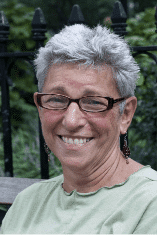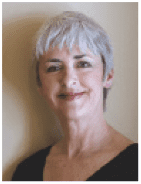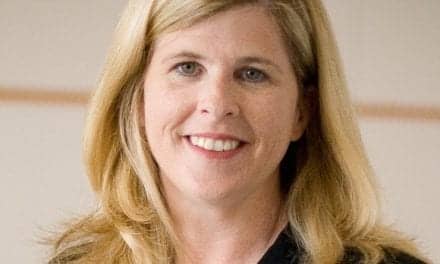Blog | January 2016 Hearing Review
The following is an abridged version of Jane Madell’s October 6, 2015 blog at her Hearing and Kids column at HearingHealthMatters.org.
In 2008, I gave a talk at Cook Children’s Hospital in Ft Worth, Tex. Becky Clem, the director of the Speech and Hearing, had asked me to put together “10 Tips for Professionals.” I decided this might be a good place to update them, so here they are:
1) Daily technology checks. Kids are not good at reporting problems, so the adults need to monitor diligently. Parents need to check technology every morning, and someone at school needs to check during the school day.
2) Make sure the FM is on and working. Classroom teachers need to check daily that the FM system is working. Kids do not want to have attention called to them, so some discreet system needs to be developed between them. For example, the teacher can quietly talk into the FM and ask, “What color is my shirt?” If the child answers, the FM is working.
3) Every child needs frequent speech perception testing. We can set hearing aids appropriately and that will tell us what is reaching the child’s eardrum, but not whether speech is clear and understandable. Every child with hearing loss needs speech perception testing! And we do not only want a score; we need to know what the specific perception errors are. By knowing the errors we can modify the hearing technology. For example, if a child is misperceiving the phoneme /s/, it indicates that he is not hearing at 5,000-6,000 Hz. The audiologist should use that information to modify settings and then check that perception has improved.
4) Everyone needs to monitor performance. If you don’t test, you don’t know what the child is hearing—but more importantly, what the child is not hearing. It is everyone’s job to monitor speech perception. Parents, SLPs, TODs, auditory-verbal clinicians, and teachers need to be the listening police. In what situations is the child hearing well? In what situations is the child having difficulties? What specific phonemes are being misheard? Are they being misperceived in all conditions or just at a distance? Information should be recorded and sent to the audiologist, who should change technology settings to improve performance.
5) As kids get older, educate them about their hearing loss. When hearing loss is identified, we educate parents about hearing loss. We discuss causes of hearing loss, help them understand the different forms of technology, and the effect of hearing loss on language and brain development. As kids get older they need the same information. It is their hearing loss and they need to understand it. Starting at about 7 or 8 years, I start explaining the audiogram to kids. This kind of counseling also opens opportunities for kids to ask good questions.
6) Everyone misunderstands sometimes. It is important for kids to understand that everyone misunderstands sometimes, not just people with hearing loss. So, it is okay to ask for repetition or clarification if what you think you heard does not make sense. This is an advocacy issue, and everyone working with a child needs to work on this.
7) Meeting other kids with hearing loss. Mainstreaming is terrific. Ideally, the kids are attending schools that have other kids with hearing loss. But, if not, both families and schools can arrange a venue where kids with hearing loss can meet other kids with hearing loss. School districts can arrange a group lunch once a month where kids from different schools can meet up. Families can take kids to either local or national AG Bell conferences and/or teens can join the LOFT program at AG Bell where they have the opportunity to be mentored by older kids with hearing loss.
8) Keep an eye on new technology. Technology keeps improving. Even if a child is doing fairly well with technology, could he/she do better with improved technology? Do newer hearing aids offer something that the older hearing aids do not? Is it time to consider a cochlear implant or new processor? For children, who are depending on listening to learn, and for whom learning will determine who they are in the future, is “good enough” sufficient? Not in my mind. Good enough is not good enough for kids with hearing loss. Only excellent is good enough.
9) Parents and caregivers need to be involved. We cannot leave our kids at the door of audiological evaluations, of school, of therapy. Parents need to be involved. Parents need to know exactly what their child is hearing, what he is missing, and what needs to be done about it. Is he hearing at the string bean? If not, what has to happen to do so? If he is hearing at the string bean but is not understanding, what has to happen in therapy? What is happening in therapy and in school? What do parents need to do to keep things moving in an upward direction? What do parents need to tell teachers to help them understand about hearing loss? The parents are really in charge. The more they know and are involved, the better their kids will do.
10) WE ARE A TEAM. Everyone working with a child with hearing loss is part of a team. The AVT and SLP needs to tell the audiologist how the child is doing before each evaluation. It is helpful if they can tell the audiologist what the child is hearing and missing—the more specific the better. What is the child’s language level? With this information, the audiologist knows what speech perception test to use. Likewise, the audiologist needs to tell the AVT and SLP if speech perception is not good enough. If aided thresholds are good enough (and only if aided thresholds are in the string bean), poor speech perception indicates that therapy is needed to improve skills. The audiologist should point out if speech perception in one ear is poorer than the other, indicating that some listening work in the poorer ear alone is a good idea. By communicating with each other—and really listening and respecting each other—we can improve a child’s success.

Chime in on Jane Madell’s Hearing and Kids column at HearingHealthMatters.org
Original citation for this article: Madell J. 10 Tips for Helping Kids with Hearing Loss. Hearing Review. 2016;23(1):10.





While real ear is CRITICAL, it is not sufficient. Real ear provides information about what is reaching the tympanic membrane. If you want to know what is reaching the auditory portion of the brain, it is essential that you do behavioral testing – including aided thresholds and speech perception. I am not suggesting that you ONLY do aided thresholds but aided thresholds are a part of complete verification. Validation alone with REDC is not sufficient.
Both grandchildren had myringotomy procedure and bilateral tubes. My grandson was delayed in speech, and has been held back to repeat Kindergarten. His articulation appears developmental, however his pronoun confusion is concerning us for language delay. He is now receiving Speech Therapy, but continues with the “infantile perseveration”. Does this have anything to do with his hearing or the fact that he did not have a myringotomy until he was 3 years? He is now 6 years old. He does not have hearing aids or wear glasses.
I do not know your grandchildren so I cannot answer directly. I would suggest that your grandchild have an evaluation by a pediatric audiologist and by a speech-language pathologist or auditory verbal therapist who works with children with hearing loss teaching listening and spoken language. After you get the evaluations the professionals will be able to give you more information.
Another very important piece to acknowledge is that using aided thresholds alone is a very outdated and flawed way of verifying hearing aid fittings. Audiologists should be using verification with RECD’s in a test box or real ear measurements with properly identified targets using an evidence based prescriptive formula. This takes the guesswork out of identifying what the kids are hearing. It is unacceptable for Audiologists to provide anything less. Parents should be encouraged to seek out clinics that do real ear measurements and proper verification and do not rely on aided audiograms as a sole method of verification.